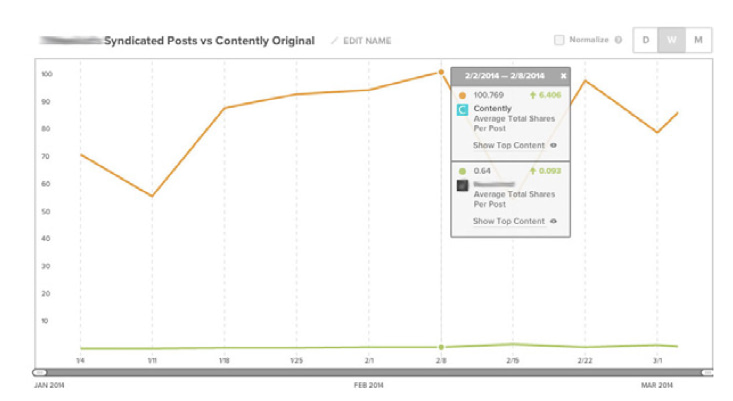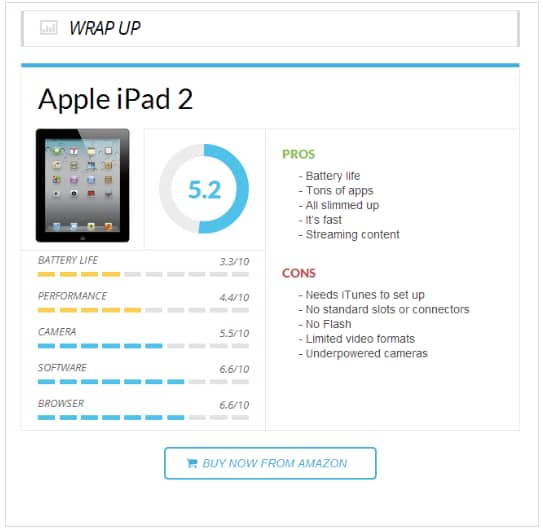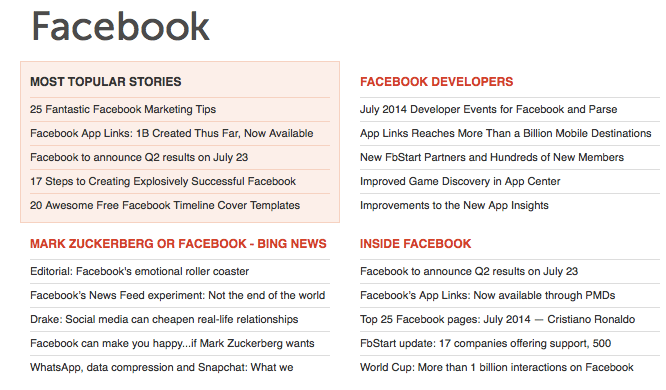Content marketing has changed the way we approach marketing; businesses are re-allocating money that was previously earmarked for traditional methods of marketing, and putting it towards the creation and promotion of content.
And while content marketing has been proven to be effective in terms of building trust, generating leads and forging connections with customers, it also requires a great deal of creativity and originality. Marketers need to come up with new ideas for content at a record pace, and this can certainly be a challenge.
Contently’s State of Content Marketing 2014 report underlines the importance of original content: according to an analysis of Contently’s own content versus that of a competing blog with mostly syndicated content, Contently’s content gets a whopping 100x more shares.

With the majority of businesses producing anywhere from 1-5 blog posts each week, this is a whole lot of original content! This article will attempt to offer some original content ideas and strategies marketers can use to generate new and unique ideas for their blog posts.
30 Original Blog Post Ideas for Content Marketing
1. Write a blog post about a social media conversation: Sometimes the best discussions originate from a Facebook post or tweet. Take screenshots of these discussions, and incorporate them into a blog post.
2. Survey your readers or social media followers: Using Survey Monkey or another free survey tool, poll your readers or followers. Present the results in the form of a blog post, complete with graphs or charts.
3. Create your own infographic: Use a tool like Piktochart to easily create your own infographic. These are great for accumulating social shares and inbound links.
4. Piggyback off a popular post: Take a look through your analytics to find your most popular (read, liked or shared) post. Create a ‘part 2’ to this point, and link to it from the original post.
5. Create a list of useful tools: This can work in virtually any niche. Compile a list of the most useful tools that can help your audience.
6. Write a post listing your top posts: Create a top 10 list of your most popular blog posts on a particular topic. Give a brief summary of each post to entice readers to click through.
7. Create a product review post: List and review products that would be of value to your audience. Use a plugin like WP Product Review to create professional-looking reviews, complete with an affiliate ‘buy now’ button.
8. Address a reader comment: Look through your blog comments to find a particularly interesting or controversial comment you can address. Write a blog post responding to the comment.
9. Ask your social media followers a question: Pose a question to your social media fans or followers and then write a blog post outlining and discussing the answers.
10. Write a top 10 blog post list: Compile a list of the 10 blogs or websites in your niche, and then email the blog owners to let them know. This is a great way to generate inbound links (hint: create a simple badge or seal they can use on their site).
11. Write a prediction post: Prediction posts are a great way to show your ability to think critically about your industry. Write a post discussing trends in your niche or industry over the coming year.
12. A call for guest posts: Write a post asking for guest post submissions. The post can outline your submission requirements and procedures.
13. Profile an industry leader: Send a few questions to a leader in your niche, and use the answers as part of a post profiling how this person has made an impact in your industry (be sure to send a link to your interviewee when you’re done so they can share it with their audience).
14. Create a case study: Using your website analytics or past client files, pull together a case study you can share on your blog. Extrapolate as to how others can use this information to achieve the same results.
15. Use a blog topic tool to generate ideas: If you have a general idea of what you want to write about, use a tool like Hubspot’s Blog Topic Generator or Portent’s Content Idea Generator to brainstorm topics and headlines.
16. Create an ultimate guide post: Create a definitive guide on an important topic or issue in your industry. These are great for attracting inbound links, and can act as ‘evergreen’ posts that can serve as a resource for years to come.
17. Spin a title: Find a popular blog post in your niche, spin the title and write your own! I’m NOT saying copy it…capitalize on the popularity of the topic by changing the title and writing a post that adds a unique perspective to the conversation.
18. Do a blog post exchange: Contact a fellow blogger in your niche and ask about doing a post swap: you write a post on their site, they write one on yours. This is a great way to expand your reach, and help your fellow blogger do the same.
19. Share a hypothetical situation: And then ask your readers for their advice or input. If you like, award a prize for the best answer.
20. Write A ‘who to follow’ post: Compile a list of the top influencers in your industry, and link to their social media profiles.
21. Analyze an industry report or study: Write about a recent research study or report, giving key findings and discussing how they apply to your audience.
22. Browse Alltop for post ideas: Browse topics in your niche to find popular and trending sub-topics to write about.
23. Use Creative Commons Search to find interesting photos or infographics to share: You can use these images either to supplement your blog posts or as the starting point for new blog post ideas.
24. Create an industry ‘cheat sheet’: Help your readers solve a problem by creating an easy-to-follow resource page they can bookmark and refer back to when needed.
25. Answer a Yahoo or Quora question: Write a blog post with your answer, and then link to it (if possible) from Yahoo or Quora to generate traffic to your site.
26. Share how you got started in your business or industry: Your readers will appreciate knowing how you got started, and how they can do the same.
27. Share a list of your favorite blog posts: Compile a list of your top 10, 20 or even 50 blog topics on a particular topic (feel free to throw your own posts into the mix, but do it sparingly!)
28. Write a satire post: Create a tongue-in-cheek post that says the exact opposite of what you mean. For example, a post titled “Best Ways to Find New Clients”, comprised of all the WORST ways to find clients.
29. Write a ‘State of ______’ post: Summarize the current state of your industry, including trends, changes and the latest research.
30. Recap a recent industry event: If you’ve attended a conference, tradeshow or meetup, give a summary of the event (and be sure to link to the profiles of those you talk about…great for catching their attention!).
It can be a challenge to come up with new and original ideas to fulfill your content needs. But keep in mind that the key is providing value to your audience, not necessarily coming up with earth-shattering new ideas every time you write. Think about what your audience needs to know, and address these questions and issues in your blog posts. This is the way to provide true value to your readers and customers.
What content ideas would you add to this list? Share your ideas with us below!






